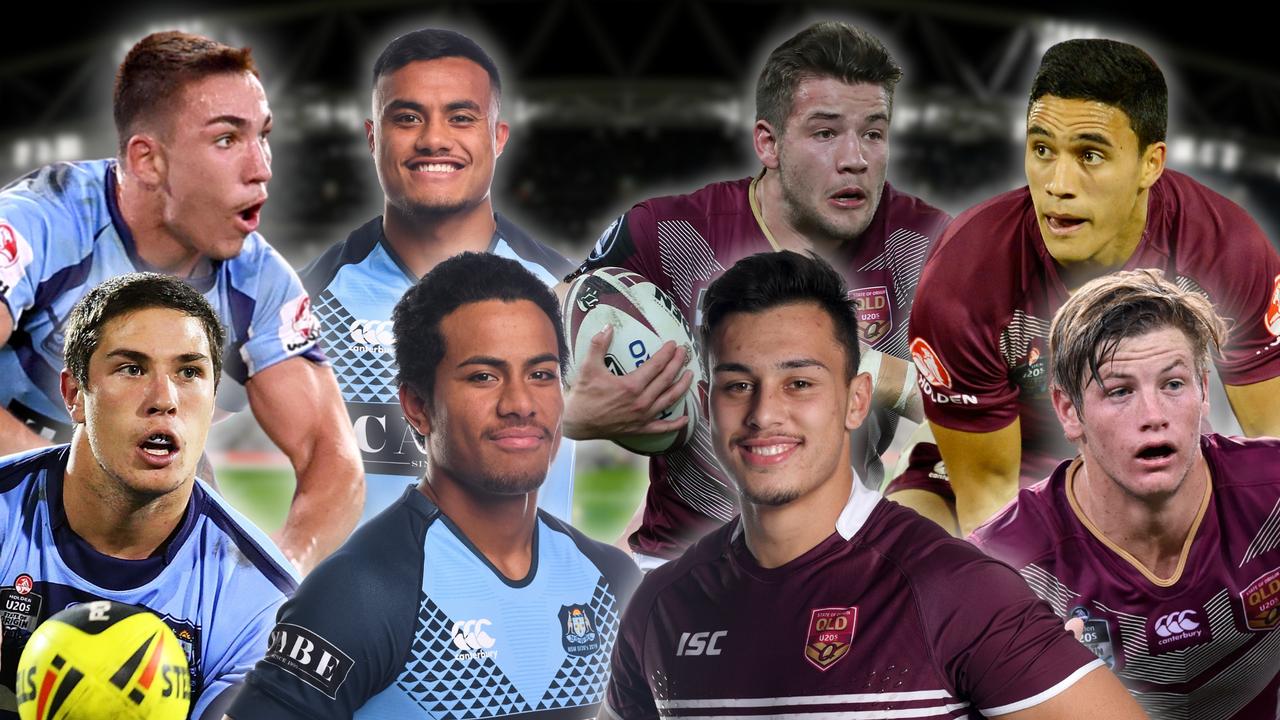Paul Kent: Red-hot Latrell Mitchell the perfect test for stumbling Melbourne Storm
From the moment the Big Four began to become the Big One, many have tried to predict the end of the Storm era. Latrell Mitchell may give more reason to believe the end is near, writes PAUL KENT.
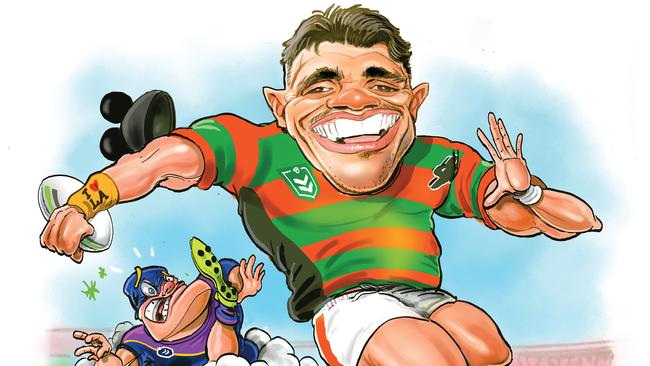
NRL
Don't miss out on the headlines from NRL. Followed categories will be added to My News.
The time was the 1990s and there was an old sportswriter with a deep throaty voice, one that sang like it was soothed in kerosene and gravel, with a Camel cigarette for a chaser, who broke the news that the great Super League war of 1995-97 was finally over.
Finally, everybody exhaled.
He got such a positive response at this tremendous news that he went on to write it several more times, beginning it in late ’95 and continuing on for some years after that until, finally, the war really did end in the late spring of 1997.
With the War finally over he solemnly declared with some sense of gratification that he broke the news first, well before everybody else, and stick that in your hat.
You can be first only once, it seems, so the earlier must be better.
Stream every game of every round of the 2022 NRL Telstra Premiership Season Live & Ad-Break Free During Play on Kayo. New to Kayo? Start your free trial now >
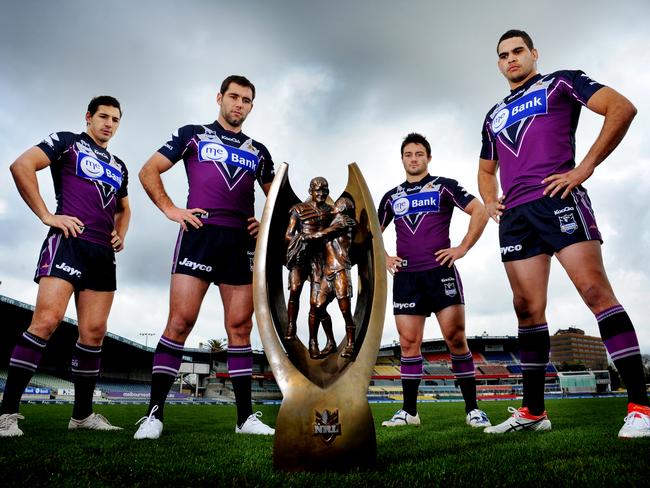
Along similar lines, more than a few of us Vaunted Experts have been tipping for some years now that the Melbourne Storm’s dominance is finally over, a narrative that began sometime around 2010 when salary cap cheating rubbed them out of the premiership and they were forced to lose Greg Inglis first from the Big Four, and which continued on as the Big Four was systematically reduced when Cooper Cronk left, then Billy Slater and finally the great one, Cameron Smith.
In between all the Storm did was respond with three premierships and two runners-up medals, four minor premierships, and finishing out of the top four only once, when they were sixth.
Showing a fool can’t be taught, though, the dialogue has turned up again in recent weeks with the Storm losing four games in a row for the first time since 2015.
At this, Storm fans will point to a decade ago, about this time when Origin was just finishing, and the Storm went on a four-game losing streak that had many convinced the end was beginning.
They beat Canterbury in the grand final that year.
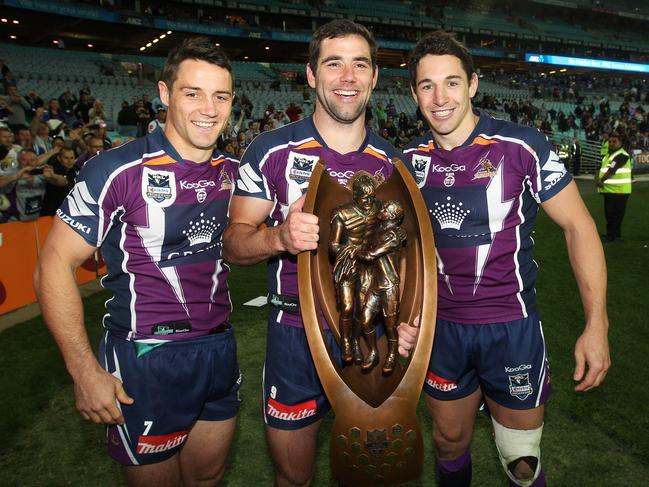
Losing streaks are rare for the Storm. It’s built on their bricks and mortar approach, a workman’s ethic to identify and fix whatever shortfalls has caused them to lose, most often achieved within the week.
So when the Storm lost to Manly in round 16 most expected them to have it fixed by the following week against Cronulla, which they didn’t.
Then when they played Canberra last week most were certain it would be righted, but it wasn’t.
There has been evidence the Storm might finally be beginning to slide, but enough excuses to suggest they are not.
Their Next Man Up philosophy, for instance, where no team has managed to turn more journeymen players into accomplished role players, has been threatened more of late than at any other time.
Yet the number of players in similar positions that are injured, as well as Covid’s effect on the game, and the inability of many of those players to be schooled in the Storm ways in State Cup, has hindered that development.
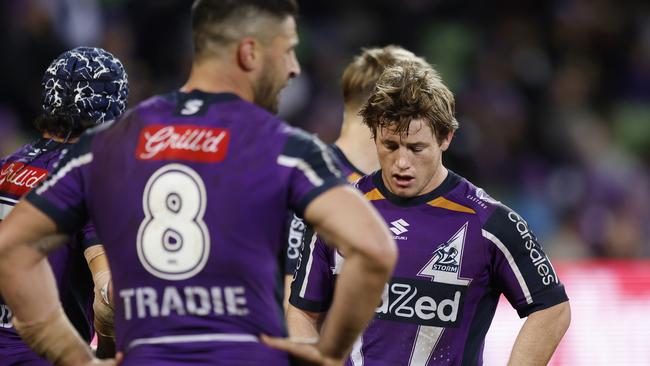
On Saturday night they face a resurgent South Sydney and stare down four losses in a row, and on top of that is another threat.
One of the Storm’s great abilities has always been the capacity to take out the great threat in the opposition, as they emerged.
Tom Trbojevic put together a season for the ages last year but when they met in the first week of the finals the Storm pushed Trbojevic towards sidelines or stacked numbers on him through the middle that made him reasonably mortal.
It was a similar story in the 2017 grand final that shut down Jason Taumalolo and Michael Morgan, who went into the decider as the NRL’s form players.
So, without writing the Storm’s obituary once again, it is a fool’s mistake, after all, Saturday night’s game against South Sydney and the might of Latrell Mitchell will still emerge as a solid indicator of where the Storm is, at least in terms of this season.
Mitchell has returned from injury in a rare kind of mood. He got aggressive and personal against Canterbury last round and, right away, all the Big Dogs in the competition were put on notice. He said as much after the game.
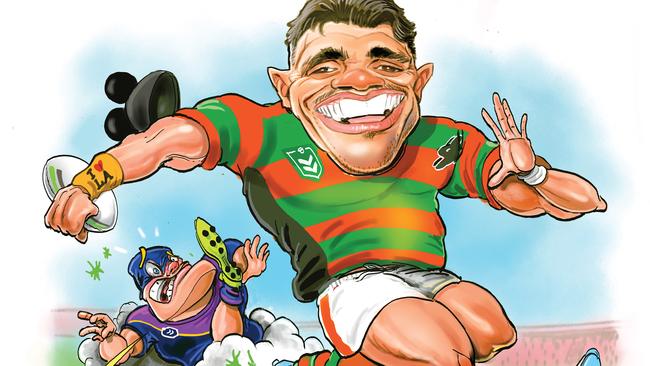
His performances are such, some are already suggesting that, if Mitchell can maintain his rage and form, then he is in the kind of mood, Godzilla eyeing Tokyo, that could take the Rabbitohs all the way to the grand final.
So come Saturday night he looms as some threat for a Melbourne team that might no longer be what it once was, fighting to remain who they are.
The test for the Storm is also deeper than merely pulling out the playbook that shut down Trbojevic last year, or which they might use against other fullback threats.
Some are wondering whether the Storm still has it in them.
Unlike the other top-flight fullbacks like Trbojevic and James Tedesco, who deceive the defence, and particularly the opposition fullback, Mitchell is more honest.
In other words, Trbojevic and Tedesco might follow an attack as it shifts from left to right with each tackle upfield, showing themselves on the right side to encourage the fullback to follow and number up defensively before sweeping late to attack on the left.
Mitchell will more often plant himself in the place he plans to attack, which is often alongside Cody Walker.
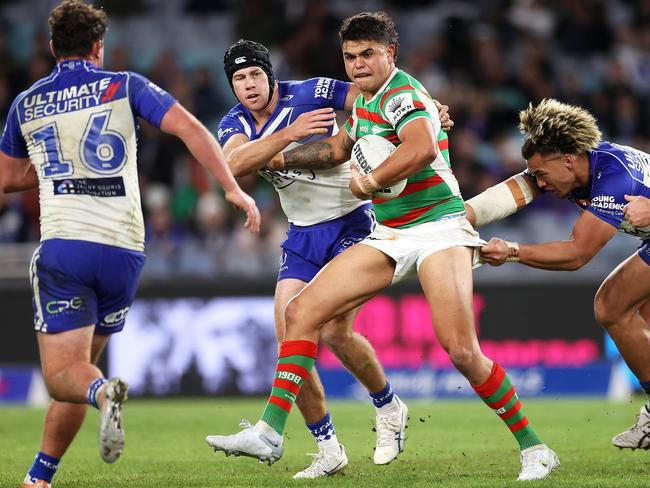
Here, though, is where the Storm will likely reveal their cleverness.
Whereas most teams will adjust and number up from the short side in the attack, which would become the right side as play shifts across field, the Storm will adjust and stay on Mitchell, the threat, numbering up on him first.
In some instances, they will even double team opposite the threat and trust themselves to adjust wherever else they are short, if necessary.
Still, the fact Mitchell plants himself where he plans to attack with no consideration given for disguise reveals his other qualities, the healthy arrogance that he doesn’t care you know, you can’t stop him anyway.
That physicality he brings makes defences nervous.
And that challenges the Storm right where they are strongest.
It will be quite the battle.
And how that gets answered on Saturday night will reveal, for all the Vaunted Experts, a lot about both teams.
SHORT SHOT
Cameron Smith’s Open Championship win suffered the inevitable follow-up hysteria, beginning when a reporter asked in the press conference afterwards whether he was preparing to join the Saudi-backed LIV Golf Series.
Smith dodged the question, but not what you might call nimbly.
There has been a lot of anger directed towards those golfers who have taken the huge amounts of money offered by LIV, driven by an anger towards Saudi Arabia’s disgraceful human rights record, which is completely legitimate.
But what of the accusers?
Much of the vitriol is coming from American journalists and defenders of the American PGA, apparently in the name of equality and fairness for all, with no admission of their self-interest.
Nobody would regard America’s human rights record as stellar, for instance.

From politically driven wars like Vietnam, to the mistreatment of prisoners at Guantanamo Bay, to the systemic racism and poverty that massively disadvantages minorities, its inadequate labour protections, the disproportionate covid fatality figures against minorities and the poor, on it goes.
Yet we are not as outraged at this … because America is on our side.
They are an ally, and so the propaganda is shaped to suit us, often by a friendly media slant.
When the Socceroos recently qualified for this year’s World Cup in Qatar, for another, much of Australia cheered, forgetful that the big stadiums were built by migrant workers brought in on false promises, their passports often taken from them so they could not return home, paid amounts far less than they agreed to without possibility of appeal, while being forced to work in shocking workplace conditions that led to multiple deaths.
Yet the loudest noise heard from Australia was “Aussie, Aussie, Aussie …”




